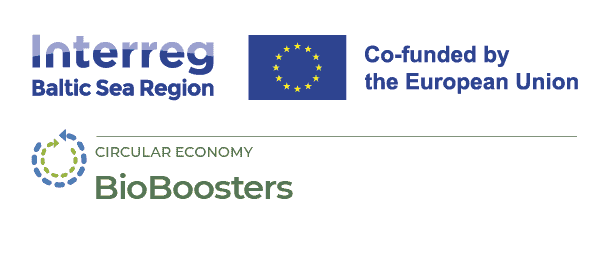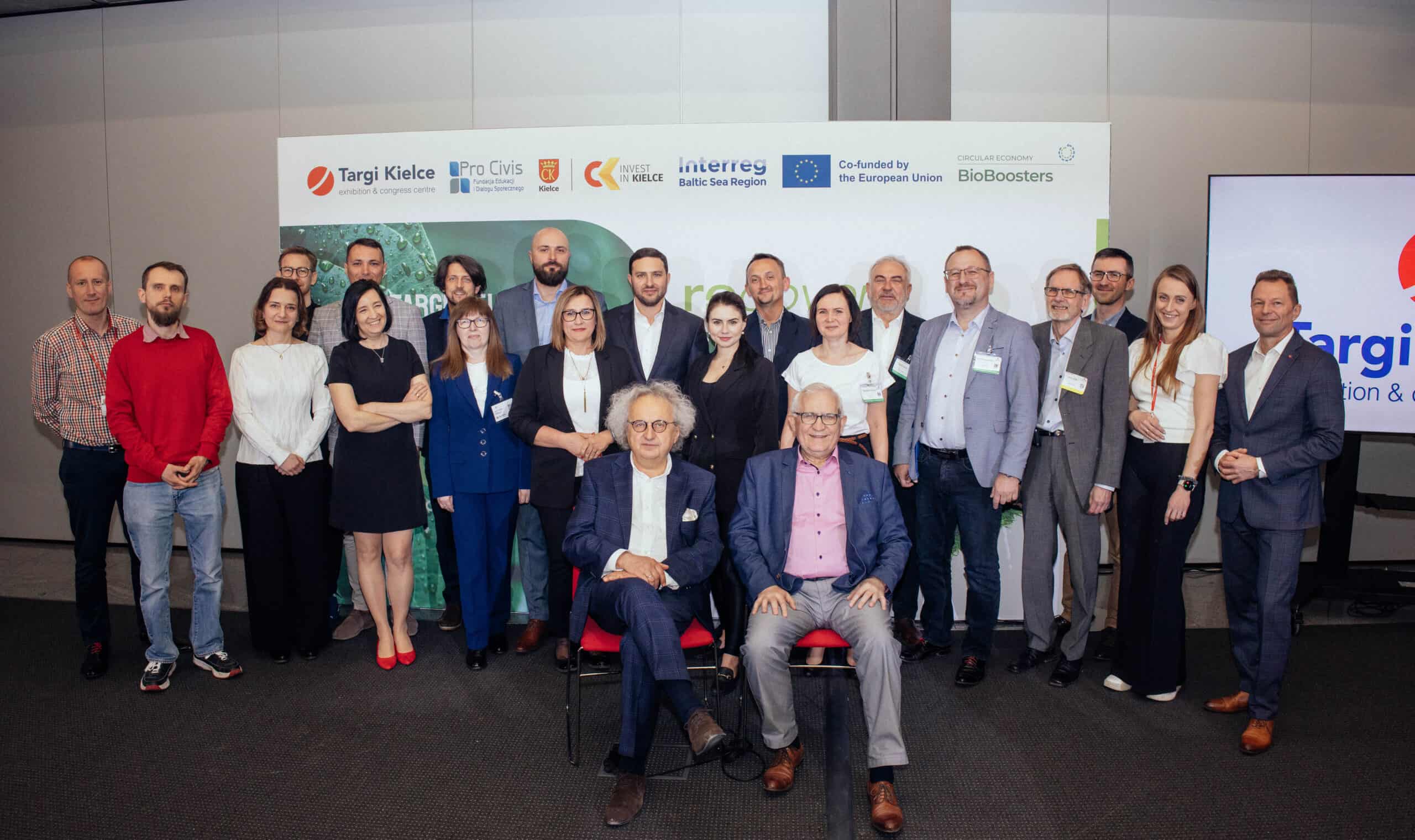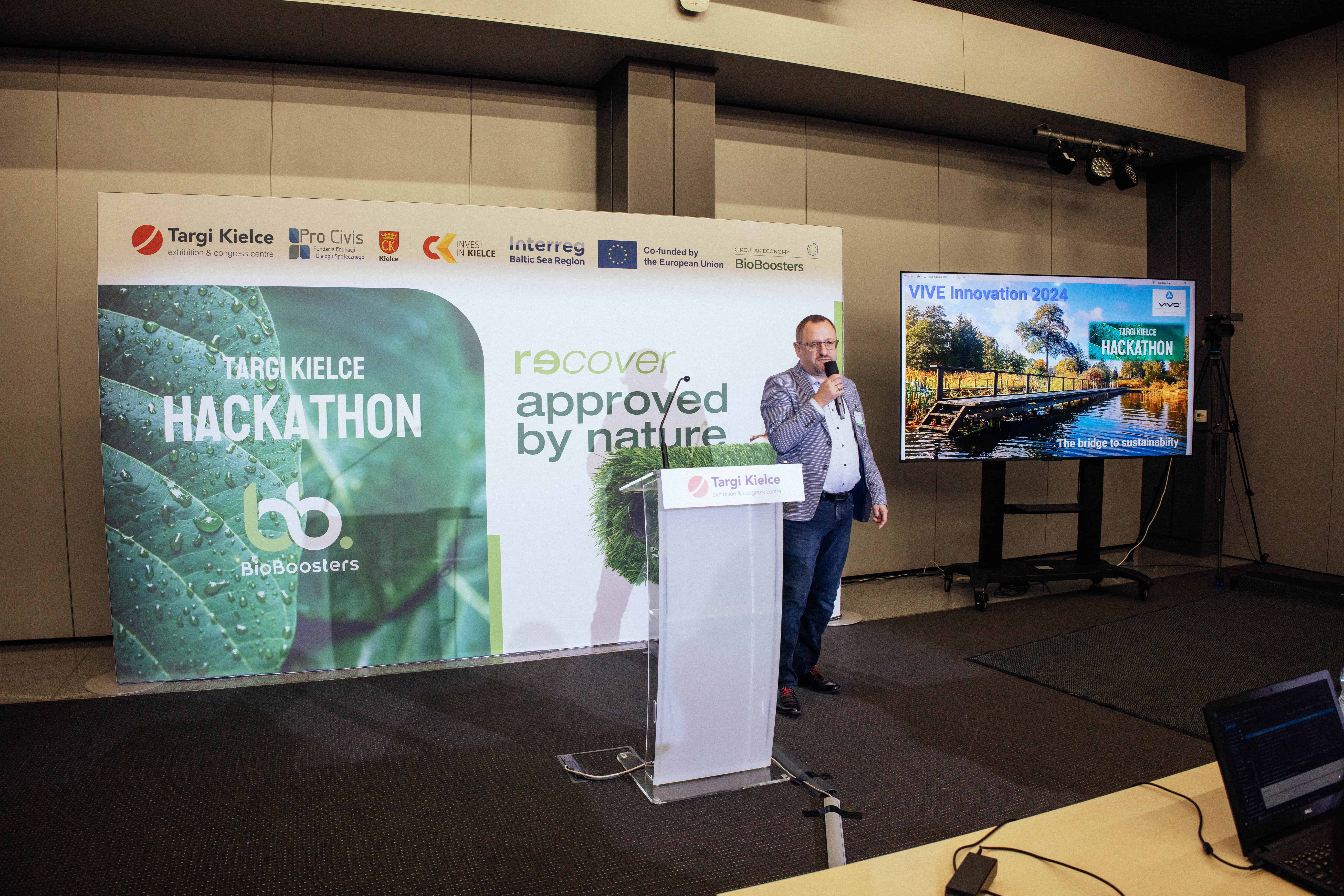
The story about Targi Kielce Hackathon
02 May 2024
Targi Kielce Hackathon
Targi Kielce is one of the largest trade fairs exhibitions centres in Central-Eastern Europe. In the hackathon the main challenge was to find solutions to recycle used carpet and to limit the produced wastes after each exhibition. After closing the call for applications 5 teams from Poland and Finland were selected to join the final Hackathon Days which were organized in Kielce (Poland) in April 10-11, 2024.
Read more about the process from the interview with Damian Kuznowicz from PRO CIVIS Foundation, the organization that coordinated Targi Kielce Hackathon.
What makes BioBoosters Hackathon unique?
The BioBoosters Hackathon concept is a very interesting tool for developing innovation solutions. It is quite unique because it is based on the idea of the IT hackathon but it flexible enough to be implemented in other sectors. In this case in biocircular economy. The starting point is always a real-life problem that is diagnosed in a company. The problem is related to environmental issues and very often addresses several areas. It is very important that it is always business driven, which means that it shows direct connection between being more eco-friendly and profits. Nowadays it is crucial to show good examples that innovations related to green transition are also economically feasible. They reduce costs, give opportunities for companies to grow, to find new value chains and new markets. In the nut shell – to develop.
The hackathon concept is also unique because it could be tailor made for different challenge providers. It is not focused only on one area but gives opportunity to formulate different challenges within one call. In the Targi Kielce Hackathon we agreed to accept two types of solutions: bioproducts we that could exchange with the traditional carpets or recycling technologies.
Another unique point is time. The teams providing solutions have few weeks to develop their ideas and prepare the pitching presentations. It is not “traditional” 24 or 48 hours very often used in IT hackathons. Technological problems need time to be understood ana deeply analysed by the teams in order to properly address the solutions. The teams can also use the time to contact the challenge provider. The process allows to interact, to meet, to exchange thoughts along the way via Howspace platform. In the hackathon days the teams are attending mentoring sessions. This gives them unique feedback on their solutions from different perspectives. It really boosts the networking and gives benefit to every participant. Finally it really supports the green transition of companies in Baltic Sea Region.
What is the impact of the BioBoosters Hackathon?
The hackathon process has multiple impacts. For the challenge provider, which is usually a large company, it is very often first experience of this kind. The company decides to share their problems with the innovations ecosystem consisted of research institutes, start up’s, student groups etc. They change their mindset and they start to think about the problems not as a barrier but as an opportunity to make a change. The process creates an environment for openness and innovation brainstorming. Announcing the call is also a reality check for challenge providers in terms of what solutions are already available on the market. They are very often surprised by the outcomes and level of maturity of applications.
The hackathon has also great impact on the Teams. In Targi Kielce Hackathon we had solutions that were very developed and ready to implement but also solutions that in fact were just creative ideas of connecting different research outcomes in an innovative way. The teams have possibility to interact with real life problems which is the best validation method of their solutions. Very often participation in hackathon is also first experience of this kind for the Teams. They gain new knowledge about the other solutions, they can benchmark their ideas, establish new contacts and spread the networks. For instance, in Targi Kielce Hackathon the winning team was located in the same city as the challenge provider. They knew about each other but Vive Innovations didn’t know about the problems of Targi Kielce and Targi Kielce didn’t know about possible solution that is just around the corner.
The wining solution is based on the technology that can be used to transform all the carpets into textile composite that can be used as a building material. The composite could be used for constructing many objects which could be used also by Targi Kielce in the future. The solution is ready to implement and it has great potential to reduce the waste streams from Targi Kielce and provide objects and small architecture that can be used during exhibitions and trade fairs. It also could have a great marketing impact. Both companies are well recognized in the city and in the region. They can use the fact of cooperation to promote their business and the region as eco-aware and be a leading example of the green transformation. This cooperation could also help the city to build ecofriendly circular objects for public use, like park benches.
What kind of help you got from the international partnership in organizing a BioBoosters Hackathon?
Our partners helped us with finding the solutions providers and to spread the marketing information within their communication channels and networks. They have also supported us with external mentors. Thanks to JAMK University of Applied Sciences and Pärnu County Development Centre we had two great and experience mentors that helped the Teams to develop their ideas. Our leading partner JAMK provided also great support with answering all the organizational questions and managing the Howspace platform. Their advices were always valuable.
What lessons would you like to share with other Hackathon organizers?
It is important to understand the whole process and each step. Organizers need to be flexible when working with different challenge providers. The companies usually have their expectations and additional conditions. By knowing the purpose of each step you would be able to explain to the company were we are and why we are doing this and that. Nobody likes to waste the most valuable resource on Eart – time.
Another thing is to spend enough time on planning the final hackathon days and delegating tasks within the organizers team. Every participant needs to confident that organizers are controlling the event and there is no improvisation. On the other hand one can never plan everything and reality likes to surprise everyone. But you have to stay calm and deal with the problems if they come up. That’s also part of the process.









